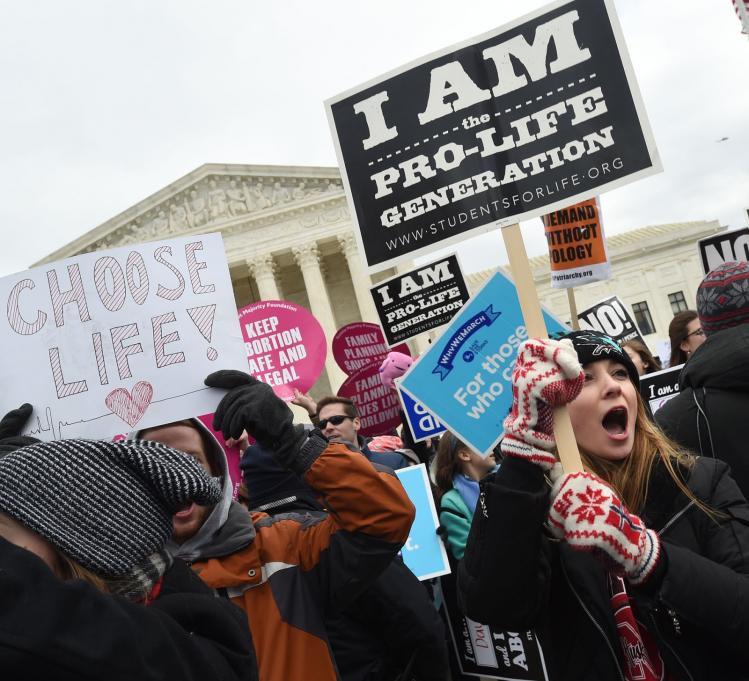
Officially, the Supreme Court’s most recent abortion ruling, in June Medical Services LLC v. Russo, was decided five to four, with Chief Justice John Roberts joining the liberal majority in striking down a Louisiana law that required doctors who perform abortions to have admitting privileges at a local hospital. But in an important sense, the case was decided eight to one, with only Justice Clarence Thomas addressing the root of the problem, which is that Roe v. Wade and Planned Parenthood v. Casey have saddled the court with an indefensible standard that ought to be discarded and replaced.
As David French pointed out, the other justices who are usually considered sympathetic to the pro-life cause did not join Thomas’s dissent. Indeed, they implied that they accepted the basic framework of Casey—appearing to acknowledge that if the Louisiana law did, in fact, substantially burden a woman’s access to abortion, it should be struck down. And in a remarkable passage of the majority opinion, Chief Justice Roberts writes that the task of comparing the value of prenatal life with a woman’s liberty interest cannot plausibly be done by anyone, “let alone the Court.” But the pro-life movement has been trying for more than five decades to get the court to do precisely this.
To accomplish this goal, we who are a part of that movement aligned ourselves with a political party generally in favor of defending liberty and opposed to using the government to protect the vulnerable. A party that denies a right to health care (including for women at risk for abortion). A party that refuses to take up bills supporting paid family leave, help with childcare, and even perinatal hospice for babies given a difficult prenatal diagnosis. A party with a pro-life caucus member who tried to pressure his mistress into having an abortion. And in our current moment, we have aligned ourselves with a president who was willing to sacrifice children at the border in favor of his immigration policy, and to use the Bible as a public-relations prop. The damage done to the pro-life movement by its partnership with Trump will take decades to undo.
And yet, Lucy beckons us back toward the football one more time. The president says he has a new and better list of Supreme Court nominees for us. And aren’t we, once again, just “one justice away” from overturning Roe and Casey?
Enough. It is time for the pro-life movement, finally, to learn a difficult lesson. We need a new strategy. Many will rightly point to the decision in June Medical Services as the primary evidence for this, but the very same day the court also paved the way for the federal government to kill four Indiana men via the death penalty. For those looking to the court to defend the inherent and equal dignity of all human beings, it is long past time to take a hint.
I agree with O. Carter Snead that opponents of abortion must not quit in the face of these profound challenges. We must, as he says, find a way to go forward in “building a civilization of love, radical hospitality, and legal protection for unborn children and their mothers.” And though Snead’s article does give me a glimmer of hope that Chief Justice Roberts may yet surprise us and rule differently in the future, I also believe that our future strategy must not come down to the hope that we may be surprised.
There are other strategies available to us. Efforts to change the culture and law at more local levels, for instance, have actually seen far more success. As Michael New recently pointed out, the U.S. abortion rate has fallen by 50 percent since 1980, a record number of pro-life laws are being passed at the state level, and abortion facilities are closing at high rates. I’d add that the stigma surrounding performing abortions has made it necessary for states like California to turn to non-physicians to do them.
Many assumed that acceptance of abortion would grow over time as American society became more liberal in other ways, but that has not been the case. And that’s because the best arguments against abortion do not fit neatly into our familiar ideological categories. No one should be surprised, then, that opposition to abortion has grown simultaneously with, for example, support for same-sex marriage.
Yes, politics and culture have a reciprocal relationship, but the pro-life movement’s cultural gains took place during an era when our political relationships actively undermined our ability to change the culture. What might we have accomplished if, instead of aligning ourselves with the GOP, we had a politics that reflected and reinforced what we actually believe about the dignity of the human person?
But let us look forward, not backward. We find ourselves in the middle of a major political realignment: What creative ideas and strategies might be born of our current moment? Abandoning our old strategy gives us the opportunity to look to the future with the hope of an explorer—rather than with the dread of Charlie Brown once again trudging toward the football.
Please email comments to [email protected] and join the conversation on our Facebook page.
Previous Story
Breath & Fire
Next Story
A Model Minority?
